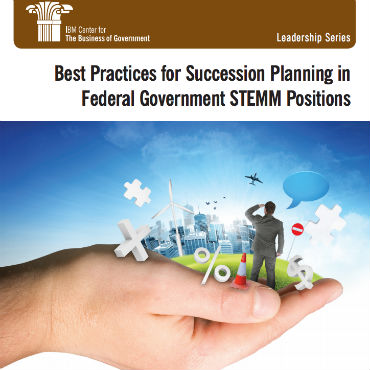Planning for the future STEMM shortfall

A new report from the IBM Center for the Business of Government highlights agency success stories and offers advice on STEMM succession planning.
What: "Best Practices for Succession Planning in Federal Government STEMM Positions," by Gina Ligon, JoDee Friedly and Victoria Kennel, IBM Center for the Business of Government
Why: The President's Council of Advisors on Science and Technology estimates there will be 1 million fewer graduates in the fields of science, technology, engineering, mathematics and medicine over the next decade than the nation is expected to need. Despite these numbers, the federal government has yet to develop a strategy to ensure that it replenishes its STEMM workforce as older employees retire. The shortage could have severe implications for agencies such as NASA, the Veterans Affairs Department, Nuclear Regulatory Commission and the Health and Human Services Department, where more than 50 percent of their workforces are STEMM employees.
The report cites the main challenges as competition from the private sector, retaining leaders that will educate and train future leaders in the organization, and succession planning. The authors make two recommendations: agencies should borrow best practices from other agencies while customizing procedures to meet their unique needs; and they should capitalize on mentoring programs, job rotations and project-based learning experiences.
The report also cites STEMM success stories.
The National Nuclear Security Administration, working with the Partnership for Public Service's "Extreme Hiring Makeover team," created better job postings and hiring systems to attract the best talent. And the Office of Naval Research revamped its mentoring program, allowing matches between mentors and protégé to happen across departments, making mentorship training mandatory and checking in with mentors/protégées regularly to assess the match.
Verbatim: "While the need for STEMM succession planning is clear, there has been insufficient action on this challenge. It requires a great deal of forethought, planning and adaptability, given the rapid changes and budget cuts faced by agencies. Further, turnover of senior-level political appointees often stifles senior-level leadership support and accountability for succession planning efforts."
Full report: www.businessofgovernment.org
NEXT STORY: Senate Defense Bill Mulls Bonuses for Cyber Pros



